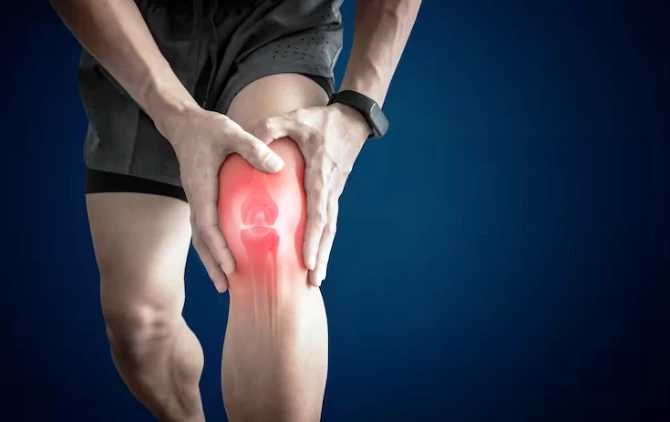
Plica Syndrome
- Plica Syndrome
- What is Plica Syndrome?
- Causes of Plica Syndrome:
- Symptoms of Plica Syndrome:
- Diagnosis of Plica Syndrome:
- Treatment Options for Plica Syndrome:
- Differences Between Plica Syndrome and Meniscal Tear:
- Definition and Origin:
- Symptoms:
- Causes:
- Diagnosis:
- Treatment:
"Plica Syndrome" or commonly known as "Patellofemoral Pain Syndrome" is a prevalent orthopedic condition where structures on the front of the knee and the back of the knee cap (patella) cause pain. In this article, I will provide information about the causes, symptoms, diagnostic methods, and treatment options for Plica Syndrome.
What is Plica Syndrome?
Plica Syndrome is characterized by pain and discomfort in a structure called the plica, located between the patella and femur (thigh bone) in the knee joint. The plica is a structure that develops during the embryonic period, normally becoming atrophic, but in some individuals, it may persist without atrophying. In such cases, friction and pressure occur on the plica tissue during knee movement, leading to irritation and pain over time.
Causes of Plica Syndrome:
The exact causes of Plica Syndrome are not fully understood, but the following factors are believed to contribute to its development:
- Anatomical Factors: Anatomical problems such as misalignment between the patella and femur or an enlarged or compressed plica may contribute to Plica Syndrome.
- Muscle Imbalance: Imbalance or weakness in the muscles around the knee can lead to Plica Syndrome by affecting knee joint movements.
- Overexertion: Repetitive exercises or sports activities that strain the knee joint can cause irritation in the plica tissue.
- Knee Injuries: Trauma or repetitive microtraumas to the knee can increase the risk of Plica Syndrome.
- Flat Feet or Biomechanical Issues: Problems in foot structure can affect knee joint movements, leading to friction on the plica.
Symptoms of Plica Syndrome:
Plica Syndrome is commonly observed in young and active individuals. Symptoms typically manifest as localized pain and discomfort on the front of the knee. Additional symptoms may include:
- Flattening Sensation in the Knee: A sensation of flattening on the front of the knee when bending or flexing the leg.
- Clicking or Popping in the Knee: Audible clicking or popping sounds during knee movements or loading.
- Swelling in the Knee: Swelling or mild swelling in the knee joint.
- Increased Pain with Stairs: Increased pain during activities such as ascending or descending stairs.
- Instability in the Knee: In some cases, a feeling of instability in the knee.

Diagnosis of Plica Syndrome:
The diagnosis of Plica Syndrome is typically based on physical examination and the patient's complaints. Additionally, the following methods may be used during the diagnostic process:
- Imaging Techniques: Imaging methods like X-rays, MRI, or ultrasound can help assess structural abnormalities in the knee joint or identify other possible causes.
- Arthroscopy: Arthroscopy, a surgical method, may be used for the definitive diagnosis of Plica Syndrome. In this procedure, a small camera is inserted into the knee to directly examine the tissues.
Treatment Options for Plica Syndrome:
The treatment of Plica Syndrome usually begins with conservative (non-surgical) methods to alleviate pain and discomfort:
- Rest: Allowing the knee to rest by avoiding activities.
- Pain Medications: Prescription of pain relievers and anti-inflammatory drugs.
- Physical Therapy: Implementation of physical therapy programs to strengthen muscles and ensure balanced movement.
- Ice Application: Applying ice compresses to reduce swelling in the knee.
- Exercise and Stretching: Appropriate exercises and stretching movements to increase knee joint flexibility.
- Supportive Shoes and Orthotics: The use of orthotics or supportive shoes to correct foot biomechanics.
If conservative treatment methods are not effective or if there is significant damage to the plica, surgical intervention may be considered. Surgical options may include partial or complete removal of the plica tissue.
Differences Between Plica Syndrome and Meniscal Tear:
Some differences between Plica Syndrome and Meniscal Tear include:
Definition and Origin:
- Plica Syndrome: A condition causing pain around the knee cap's back due to friction and irritation during patellar movement.
- Meniscal Tear: A condition where one of the half-moon-shaped cartilage disks inside the knee tears, often occurring during twisting movements or trauma.
Symptoms:
- Plica Syndrome: Pain on the inner side of the knee after activities, swelling, and occasionally a locking sensation.
- Meniscal Tear: Pain, swelling, locking, limited knee movement, and loss of sensation in the knee.
Causes:
- Plica Syndrome: Develops due to excessive friction or irritation of the patella.
- Meniscal Tear: Results from sudden twisting movements, excessive loading, falls, or trauma.
Diagnosis:
- Plica Syndrome: Diagnosed through physical examination, symptoms, and radiological imaging.
- Meniscal Tear: Diagnosed through physical examination and imaging methods like MRI.
Treatment:
- Plica Syndrome: Treatment may include rest, physical therapy, and rarely surgery.
- Meniscal Tear: Treatment options include rest, physical therapy, surgical repair, or partial meniscectomy (removal of a portion of the cartilage).
In conclusion, Plica Syndrome is a common knee disorder, especially in young and active individuals. With accurate diagnosis and treatment, most patients can significantly reduce pain and discomfort. Early diagnosis and appropriate treatment by an orthopedic specialist are crucial. If you suspect Plica Syndrome, seeking an appointment with a specialist for a detailed assessment and treatment plan is essential.

Op. Dr. Çağatay Han Malkoç
Orthopedics and Traumatology Specialist


